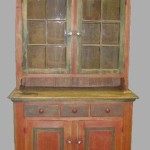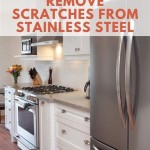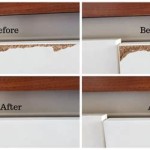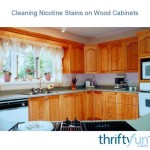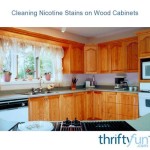Best Spray Paint For Wood Kitchen Cabinets
Refinishing kitchen cabinets can significantly upgrade the aesthetic of a kitchen without the extensive cost of replacing them entirely. Spray painting offers a smooth, even finish that is difficult to achieve with traditional brushing or rolling methods. Selecting the appropriate spray paint is crucial for achieving durable, professional-looking results on wood kitchen cabinets. The ideal spray paint will adhere well to prepped surfaces, provide excellent coverage, resist chipping and scratching, and offer the desired sheen level.
Understanding the Basics of Spray Paint for Wood Cabinets
The market presents a plethora of spray paint options, each possessing distinct characteristics that make them suitable for different applications. Acrylic latex, oil-based enamels, and specialty cabinet paints are the primary types considered for kitchen cabinets. Acrylic latex paints are water-based, offering low VOC (volatile organic compounds) content, ease of cleanup, and good color retention. Oil-based enamels typically provide a harder, more durable finish compared to acrylics but require mineral spirits for cleanup and have a higher VOC content. Specialty cabinet paints often combine the best properties of both acrylic and oil-based formulations, offering enhanced adhesion, durability, and a smooth, factory-like finish. Examining the specific characteristics of each paint type is paramount to select the best option for a specific project.
Surface preparation is just as important as the paint itself. Proper preparation involves cleaning the cabinets thoroughly to remove grease, grime, and any existing loose paint or varnish. Sanding is crucial to create a uniform surface and improve adhesion. Depending on the original finish and the type of paint being used, priming may also be necessary to ensure optimal bonding and prevent bleed-through, especially with dark or stained wood. Failure to properly prepare the surface can result in peeling, chipping, or an uneven finish.
Application techniques are also essential for achieving a flawless spray paint finish. Using the correct spray painting equipment, such as an airless sprayer or HVLP (high volume low pressure) sprayer, and adjusting the spray pattern and pressure appropriately are critical. Applying multiple thin coats of paint is preferable to one thick coat, as this minimizes the risk of drips, runs, and uneven drying. Allowing sufficient drying time between coats and after the final coat is crucial for ensuring a hard, durable finish.
Key Considerations for Selecting Spray Paint
Several factors influence the selection of spray paint for wood kitchen cabinets. These factors include the type of wood, the existing finish, the desired aesthetic, and the intended use of the cabinets. Hardwoods like oak and maple typically require a different approach than softwoods like pine. The existing finish, whether it's paint, varnish, or stain, will also dictate the necessary preparation steps and the type of primer required. The desired aesthetic, whether it's a matte, satin, or gloss finish, will influence the paint selection. Finally, the intended use of the cabinets, including the frequency of use and exposure to moisture, will impact the durability requirements of the chosen paint.
Adhesion is a primary consideration. Kitchen cabinets are subjected to frequent handling and cleaning, requiring a paint that forms a strong, lasting bond with the wood surface. Paints specifically formulated for cabinets often contain additives that enhance adhesion, even on glossy or previously finished surfaces. Priming is often necessary to create a truly lasting bond. A quality primer penetrates the wood fibers, providing a superior base for the topcoat to adhere to. Using a "bonding primer" is generally recommended for cabinets that are particularly slick or have a challenging surface to adhere to, such as melamine or laminate.
Durability is another critical factor. Kitchen cabinets must withstand daily wear and tear, including scratches, scuffs, and exposure to moisture and cleaning products. Oil-based enamel paints are known for their durability, but acrylic latex paints with added hardeners or urethane components can also provide excellent resistance to chipping and scratching. Paints specifically formulated for cabinets and furniture often include these added hardeners, making them a viable and durable alternative to traditional oil-based options.
The type of sprayer being used also plays a significant role in paint selection. Certain paints are formulated for use with specific types of sprayers, such as airless sprayers, HVLP sprayers, or aerosol cans. Using the wrong type of paint with a particular sprayer can result in poor atomization, uneven coverage, and a substandard finish. Consulting the manufacturer's recommendations for both the paint and the sprayer is essential to ensure compatibility and optimal performance. For example, some paints may require thinning to achieve the proper viscosity for spraying, while others may clog the sprayer if not properly filtered.
Recommended Spray Paint Products and Options
Several spray paint products are well-regarded for use on wood kitchen cabinets, each offering its unique blend of features and benefits. The selection of the ideal product depends on the specific project requirements and personal preferences.
Acrylic Latex Paints: These are a popular choice for DIYers due to their ease of use, low odor, and water-based cleanup. Some reputable brands offer acrylic latex paints specifically formulated for cabinets and furniture. These paints often contain self-leveling properties, which help to minimize brushstrokes and create a smooth, even finish. They're also typically more flexible than oil-based paints, making them less prone to cracking or chipping over time due to wood expansion and contraction.
Oil-Based Enamel Paints: These paints offer excellent durability and a hard, glossy finish. However, they require mineral spirits for cleanup and have a higher VOC content. Oil-based enamel paints are a good choice for high-traffic areas or cabinets that are subjected to frequent cleaning. The finish is very durable and stands up better to scuffs and marks than softer acrylic paints. It is important to note that oil-based paints typically have longer drying times than acrylics before recoating. They also tend to yellow over time, especially white paints, but newer formulations have minimized this issue.
Specialty Cabinet Paints: These paints are specifically formulated for use on cabinets and furniture, often combining the best properties of both acrylic and oil-based formulations. They are often water-based but contain additives that enhance adhesion, durability, and leveling properties. These paints are typically more expensive than standard acrylic latex paints but offer superior performance and a professional-looking finish. One-coat cabinet paints are available, although proper preparation and priming usually improve the outcome of any spray paint project. These paints can be tinted to a wide variety of colors and are often available in matte, satin, and semi-gloss finishes.
Aerosol Spray Paints: Aerosol spray paints are a convenient option for small projects or touch-ups. However, they may not provide the same level of control or coverage as a paint sprayer. Some brands offer aerosol spray paints specifically formulated for cabinets and furniture, which are a good choice for DIYers who don't have access to a paint sprayer. It is important to apply even, thin coats to prevent drips and runs. Consider purchasing an ergonomic grip attachment for the aerosol can to reduce hand fatigue during prolonged spraying. The tip of the spray nozzle should be cleaned frequently to prevent clogging.
Regardless of the chosen product, it is always recommended to test the paint on a small, inconspicuous area of the cabinet before applying it to the entire surface. This will allow you to assess the color, adhesion, and finish quality and make any necessary adjustments to your technique or choice of product.
Step-by-Step Guide to Spray Painting Wood Kitchen Cabinets
Spray painting wood kitchen cabinets involves a systematic approach to ensure a professional-looking and durable finish. The following steps provide a general guide to the process:
1. Removal and Preparation: Begin by removing all cabinet doors and drawers from their frames. Remove all hardware, such as knobs, pulls, and hinges. Label each door and drawer to ensure proper reinstallation later. Clean all surfaces thoroughly with a degreasing cleaner to remove any grease, grime, or dirt. Rinse with clean water and allow to dry completely.
2. Sanding: Sand all surfaces with a medium-grit sandpaper (e.g., 120-grit) to create a smooth, uniform surface. Focus on removing any existing loose paint or varnish and scuffing up the surface to improve adhesion. For glossy surfaces, use a coarser grit sandpaper (e.g., 80-grit) to break the sheen. After sanding, wipe down all surfaces with a tack cloth to remove any sanding dust.
3. Priming (Optional but Recommended): Apply a thin, even coat of primer to all surfaces. Use a high-quality primer specifically formulated for cabinets and furniture. Allow the primer to dry completely according to the manufacturer's instructions. If necessary, lightly sand the primed surface with a fine-grit sandpaper (e.g., 220-grit) to smooth out any imperfections. Wipe down with a tack cloth to remove any sanding dust.
4. Spray Painting: Set up a well-ventilated spray area and protect surrounding surfaces with drop cloths or plastic sheeting. Load the chosen spray paint into the paint sprayer or prepare the aerosol can according to the manufacturer's instructions. Adjust the spray pattern and pressure of the sprayer to achieve a consistent, even spray pattern. Apply thin, even coats of paint to all surfaces, overlapping each pass slightly. Avoid applying too much paint in one coat, as this can lead to drips and runs. Allow each coat of paint to dry completely according to the manufacturer's instructions.
5. Additional Coats: Apply additional coats of paint as needed to achieve the desired coverage and finish. Typically, two to three coats of paint are sufficient. Lightly sand between coats with a fine-grit sandpaper (e.g., 320-grit) to smooth out any imperfections and improve adhesion. Wipe down with a tack cloth to remove any sanding dust.
6. Clear Coat (Optional): For added protection and durability, consider applying a clear coat over the painted surface. Choose a clear coat that is compatible with the chosen paint. Apply the clear coat in thin, even coats, allowing each coat to dry completely according to the manufacturer's instructions.
7. Reassembly: Allow the paint to cure completely according to the manufacturer's instructions before reassembling the cabinets. Reinstall all hardware, such as knobs, pulls, and hinges. Reattach the cabinet doors and drawers to their frames. Adjust the hinges as needed to ensure proper alignment.
8. Final Inspection: Inspect the finished cabinets for any imperfections or areas that need touch-up. Touch up any areas as needed with a small brush or aerosol can of paint. Clean the cabinets with a mild soap and water solution.
Following these steps, combined with selecting the right spray paint and using the appropriate equipment and techniques, can result in successfully transforming kitchen cabinets with a durable and professional-looking spray paint finish.

What Is The Best Spray Paint On Kitchen Cabinets

Fantastic Article Best Spray Paint For Cabinets Amazing Spraymasters

Spray Painting Kitchen Cabinets Pictures Ideas From

How To Paint Kitchen Cabinets In 7 Simple Steps

The Best Spray Paint For Wood Furniture Rustoleum Behr Krylon Color Place

3 Ways To Spray Kitchen Cabinets In The Sprayworks

Want To Find Out How Spray Paint Kitchen Cabinets Like A Pro

Kitchen Cabinet Painting Refinishing Spray Net

How To Paint Kitchen Cabinets Best Color Ideas Cost

Want To Find Out How Spray Paint Kitchen Cabinets Like A Pro
Related Posts



